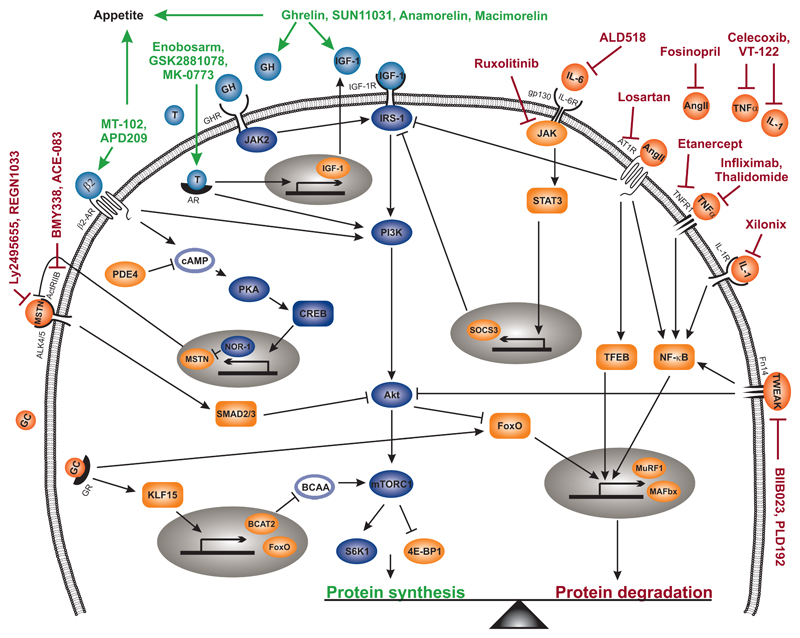Figure 1. Signaling pathways involved in secondary muscle wasting and potential drugs to reduce loss of muscle mass.
Several classes of drugs are tested in clinical trials aimed at either inhibiting catabolic signaling (drug name red) and thereby reducing protein degradation (orange), or stimulating anabolic pathways (drug name green) and thereby increasing protein synthesis (blue). Activation via IGF-1, but also other upstream signals such as GH, androgens or β2-agonist, stimulate the PI3K – Akt – mTOR pathway and, as a consequence, protein synthesis is increased. In addition, Akt suppresses protein degradation by phosphorylating FoxO and thereby reducing its transcriptional activity. Several catabolic pathways do not only contribute to muscle atrophy by increasing the expression of E3 ligases MAFbx and MuRF1 via the transcription factors FoxO, TFEB or NF-κB, which all stimulate protein degradation, but also by inhibiting PI3K – Akt signaling and thereby reduce protein synthesis. MSTN is a major negative regulator of muscle mass by inhibiting Akt signaling. The multi-factorial nature of secondary muscle wasting and the different signaling pathways involved in muscle atrophy aggravates the development of effective drugs. Abbreviations not mentioned in the text: T = testosterone; GC = glucocorticoid

